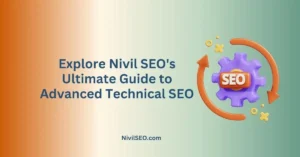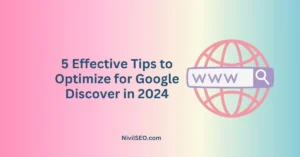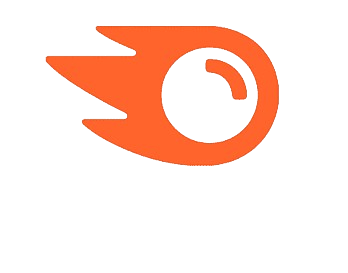It would make a difference to say, as an Nivil SEO expert, I spend many years keeping my ears open and tracking the constant drift of sands of algorithmic updates by Google, the very thing that brings website ranking to a brink, or rather, oblivion. The Google Algorithmic Changes keep on changing with great agility and speed. How complicated these algorithms are as it changes constantly is just incredible. But some essentials still apply:
Google's Core Mission: Quality Content for Users
With that said, what Google wants to achieve its ultimate goal is to get users the best match for what they are actually looking for. Such sites with quality, information, and user-appealing content rank higher. – NivilSEO, SEO expert Dubai
Keeping Up with the Algorithm Dance
However, Google’s algorithms never stay the same, although it is a bit like a late-night dance: forward one step, two steps back, and add a dash of new twists for good measure. SEO experts have to be agile, adaptable, and continually learning and evolving their strategies.
Here’s a breakdown of some major Google algorithm updates I’ve witnessed firsthand, along with the tactics I use to keep my clients’ websites at the top of search results:
- The Panda Problem (2011): Targeted low-quality content farms with thin, thin, and otherwise irrelevant content within the Web. My response? Ruthless content audits to identify and eliminate thin content, prioritizing high-quality, user-focused content creation.
- Penguin’s Penguin Punch (2012): Black hat SEO tactics like keyword stuffing and link buying took a hit with Penguin. My solution? Building a strong backlink profile through organic link-earning strategies and creating content that naturally attracts high-quality links.
- Hummingbird Takes Flight (2013): Hummingbird Takes Flight (2013) was all about understanding intent through keywords. My approach is all about content that goes beyond keywords to address the need or question of the user.
- RankBrain and the Rise of Machines (2015): Machine learning entered the fray in the world of SEO with RankBrain, and user intent meant more than ever before. This called for long-tail keywords that carried precise user intent behind them, along with entire topic clusters that could serve as single sources of information, and elevated the priority of engagement metrics of the users.
- Fred’s Focused Fury (2017): Low-quality content creators beware! Fred targeted websites with thin content and affiliate spam. My strategy? Content pruning to eliminate low-value content, content refreshes to ensure accuracy, and a focus on value proposition for every piece of content we create.
- Mobile-geddon and the Age of Responsive Design (2015): This update made mobile-friendliness a ranking factor. My response? Ensuring all client websites are responsive and deliver a seamless user experience across all devices.
- BERT’s Natural Language Processing Prowess (2019): Understanding the context and relationships between words became paramount with BERT. My SEO strategy now emphasizes well-written, informative content that speaks the language of the user, not just search engines.
The Latest Signals: Embracing the Evolving Landscape
Beyond these foundational updates, Google constantly introduces new signals and refinements to its algorithms. Here are a few of the latest trends I’m closely following, including updates as recent as 2024:
- Passage Indexing (2021): Now, Google can rank specific passages within a web page, to reward content created specifically for a search query. My takeaway: structuring content with clear subheadings and using relevant internal linking and ensuring each section provides value to the user.
- Core Web Vitals (2021): The more critical the user experience. With core web vitals, speed to load, mobile friendliness, and visual stability come into the image. Optimizing my site for speed; ensuring it is fluid on a mobile device, giving the user a clearer, less-cluttered view.
- Multisearch (2020): Multisearch, with image/text, an interesting trend as Google continues to try to understand what users mean by using more than just text. I’m incorporating strategies like optimizing images with relevant alt text and creating content that caters to users searching for information in different formats.
- MUM (Multimodal Understanding Model) (2021): This update indicates Google’s growing ability to understand information across different modalities, like text, images, and video. My tactic? Holistic content strategy incorporating different media formats to add richness and completeness to its content for users.
- Spam Update (March 2024): The spam update targeted the useless content
Conclusion
Sometimes, people get frustrated at trying to chase after the updates done by Google algorithm, don’t worry! By mastering the principles set forth within this Nivil SEO Expert’s Guide to Google’s Algorithm Updates, you will be that much closer to creating a website capable of executing in the ever-changing search landscape. Remember, quality content, a good user experience, and best practices always shine through and set up your website for long-term success. Contact Nivil SEO for more SEO insights and expert guidance!










